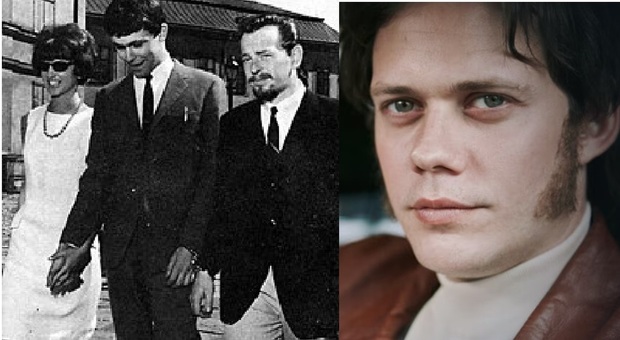
The recent passing of Clark Olofsson at the age of 78 marks the end of a life defined by audacious criminality and an improbable link to one of psychology’s most debated terms: ‘Stockholm Syndrome.’ Olofsson, whose lifetime of escapades on the wrong side of the law made him one of Sweden’s most famous criminals, died on June 24, having spent more than half his life behind bars for a litany of offenses ranging from robberies to drug smuggling. His death, at a hospital in Arvika, Sweden, while not widely reported at the time, brings renewed attention to a figure whose actions irrevocably shaped both legal and psychological discourse.
Olofsson’s notoriety is inextricably tied to a particular event in August 1973 – a bank holdup in Stockholm that defied all conventional expectations of a criminal siege. This six-day ordeal, marked by an unprecedented bond between captives and their captors, captivated a nation and, in its aftermath, spawned a term that would enter the global lexicon. His story is not just one of a career criminal, but of a charismatic figure whose presence in a volatile situation led to a puzzling psychological phenomenon.
The narrative of Clark Olofsson is a complex tapestry woven with threads of personal chaos, public fascination, and profound psychological inquiry. His actions and the reactions they elicited during that fateful bank robbery challenged existing understandings of human behavior under duress, prompting an enduring debate about victim coping mechanisms versus genuine identification with aggressors. To understand the man and the myth, we must first revisit the dramatic events that put him at the center of such an extraordinary legacy.

1. **The 1973 Kreditbanken Holdup: ‘The Party Starts!’**The events that would forever link Clark Olofsson’s name to a unique psychological phenomenon began with an unforeseen act of aggression. On a seemingly ordinary day in August 1973, a man named Jan-Erik Olsson stormed the Kreditbanken in Stockholm’s Norrmalmstorg Square, initiating a holdup that would soon escalate into a full-blown hostage crisis. His entry was dramatic and unsettling, marked by the firing of shots into the ceiling, a clear signal of his intent to assert immediate and absolute control.
Olsson’s shouts of “The party starts!” delivered in English, immediately set a bizarre and theatrical tone for the unfolding drama. He seized three bank employees, all women, as his initial hostages, plunging them into a terrifying ordeal. The sudden violence and the immediate capture of personnel underscored the gravity of the situation, signaling to everyone present that this was no ordinary bank robbery.
As the news of the holdup spread, the police quickly swarmed the location, surrounding the bank and initiating a standoff. The media, ever vigilant for unfolding crises, descended upon Norrmalmstorg Square, broadcasting the live drama to a gripped public. The world watched, unaware that this particular siege would challenge fundamental assumptions about human psychology and the dynamics between captors and captives. The stage was set for an event that would transcend a mere crime and become a case study in human behavior.
2. **Jan-Erik Olsson’s Demands and Olofsson’s Forced Involvement**Jan-Erik Olsson’s motivations extended beyond a simple desire for financial gain; he harbored a specific and unusual demand that would directly involve another infamous figure. As the standoff with the police intensified, Olsson made it clear that he wasn’t just there to rob the bank, but that he was demanding the release of a former cellmate. This specific individual was Clark Olofsson, who at the time was serving a prison sentence.
Olsson’s insistence on Olofsson’s presence dramatically altered the trajectory of the crisis. He demanded that Olofsson be sprung from prison and brought to join him inside the besieged bank. The gravity of the situation and the perceived need to de-escalate or manage the ongoing hostage crisis led to an extraordinary decision by the Swedish authorities. Sweden’s minister of justice ultimately went along with Olsson’s demand, an unconventional move that placed Olofsson, himself a career criminal, directly into the heart of the unfolding drama.
Clark Olofsson was consequently brought to the Kreditbanken, joining Olsson and the terrified hostages. His arrival introduced a new, complex dynamic into the already tense situation, adding another layer of unpredictability to the standoff. Little did anyone realize that his presence, alongside Olsson, would contribute to a psychological phenomenon that would confound experts and spark decades of debate. The decision to comply with Olsson’s demand would prove to be pivotal in how the events unfolded and were later understood.

3. **The Unexpected Bond: Hostages’ Defense of Their Captors**Over the course of the six days that the hostages were held captive within the Kreditbanken, an unforeseen and perplexing psychological shift began to manifest. Far from simply fearing their captors, the hostages — the three women initially seized, who were later joined by a man discovered hiding in the bank’s vault — started to develop a peculiar bond with Jan-Erik Olsson and Clark Olofsson. This unexpected connection caused them to begin defending their abductors.
This emerging empathy and identification with their captors was startling, especially given the inherently threatening nature of their situation. Instead of solely viewing Olsson and Olofsson as their tormentors, the hostages seemed to perceive them in a more complex light, fostering a sense of allegiance that went against conventional expectations. The prolonged confinement, the shared stress, and the intimate proximity within the bank’s confines likely contributed to this unusual dynamic.
Furthermore, this bond led to an astonishing turning point: the hostages began to exhibit hostility not towards their captors, but towards their would-be police rescuers. This inversion of expected loyalty baffled both the authorities and the public. It suggested that a deeply ingrained psychological process was at play, causing the victims to align themselves with those holding them captive rather than the forces attempting to secure their freedom. This shift was a critical component in the later conceptualization of ‘Stockholm Syndrome.’

4. **Kristin Enmark’s Plea to the Prime Minister**The bewildering allegiance of the hostages was most vividly exemplified by the actions and statements of Kristin Enmark, one of the women held captive. During the ongoing standoff, Enmark, then 23 years old, had the opportunity to communicate directly with Sweden’s Prime Minister, Olof Palme, by phone. Her words, uttered from within the besieged bank, provided an astonishing testament to the psychological shifts occurring among the captives.
In her conversation with the Prime Minister, Enmark made a plea that underscored the depth of the bond she and the other hostages had developed. She begged to be allowed to leave the bank in a getaway car, not with her rescuers, but with her abductors. Her statement was unequivocal and profoundly unsettling for those attempting to end the crisis: “I fully trust Clark and the robber,” she told Mr. Palme, referring to Clark Olofsson and Jan-Erik Olsson.
Enmark’s conviction was further articulated as she emphatically stated, “They haven’t done a thing to us.” This assertion, coming from a hostage in a perilous situation, was bewildering to external observers. She then added a detail that spoke volumes about the strange atmosphere cultivated within the bank: “Believe it or not, but we’ve had a really nice time here.” These words cemented the idea that something profoundly unusual was occurring, transcending simple fear and manipulation, and signaling a complex psychological identification.

5. **The Coining of ‘Stockholm Syndrome’ by Nils Bejerot**The bewildering behavior observed in the Kreditbanken hostages necessitated a framework for understanding, leading directly to the coining of a new psychological term. It was a Swedish police psychologist, Nils Bejerot, who was tasked with assessing the curious reactions of the captives during the robbery. His observations of the hostages’ unexpected empathy and identification with Jan-Erik Olsson and Clark Olofsson formed the basis of his conceptualization.
Bejerot initially referred to the phenomenon as ‘Norrmalmstorg syndrome,’ a direct reference to the square where the bank was located. This term was an attempt to encapsulate the victims’ tendency to identify and empathize with their captors, rather than with the authorities who were trying to help them. The dramatic nature of the events and the widespread media attention ensured that Bejerot’s observations quickly gained traction.
Over time, the more widely recognized term, ‘Stockholm syndrome,’ emerged, becoming synonymous with the psychological paradox observed in the 1973 heist. Its creation aimed to explain what many found to be an inexplicable response to extreme trauma. The syndrome quickly gained popular currency, serving as a shorthand for the complex emotional and psychological bonds that can form between captors and their captives, even amidst a life-threatening situation.
:max_bytes(150000):strip_icc():focal(749x0:751x2)/Clark-Olofsson-book-launch-062825-0db13664e7024236bfa656731e5a5692.jpg)
6. **The Trial and the Hostages’ Refusal to Testify**The six-day standoff at the Kreditbanken ultimately concluded when police forces successfully intervened, finally breaking through the roof of the bank and subduing Jan-Erik Olsson and Clark Olofsson with tear gas. This decisive action brought an end to the immediate crisis, allowing the hostages to be freed and the criminals to be apprehended. However, the psychological aftermath of the event continued to unfold in the subsequent legal proceedings.
At the trial that followed, a further testament to the profound psychological impact of the captivity emerged. The hostages, despite having been subjected to a terrifying ordeal, refused to testify against their captors. This refusal underscored the depth of the unexpected bond that had formed, demonstrating a loyalty that transcended the conventional victim-perpetrator dynamic. Their silence in court spoke volumes about the complex emotional landscape forged during the siege.
Clark Olofsson, for his role in the botched robbery, was initially convicted and handed another sentence of six and a half years. However, in a surprising turn of events, this conviction was later overturned on appeal. Olofsson successfully argued that he had acted to protect the hostages, an argument that resonated with the perception of some of the victims themselves. This legal outcome further muddied the waters surrounding the incident, leaving a lasting ambiguity about the true nature of Olofsson’s involvement and the psychological forces at play.”



